The History and Mysteries Solved
In the mid-1800s the Holy Grail of rail traffic was to establish a line crossing the Blue Ridge Mountains over to Knoxville, TN. This would open Upstate markets to more commerce in the West. There were two competing endeavors, neither of which was ultimately successful. One of these was the Greenville Northern Railway, aka “The Swamp Rabbit”, which would have started in Greenville and gone through Jones Gap. It only made it as far as River Falls.
The second was the Blue Ridge Railroad, charted in 1852. This ambitious plan would have started in Anderson and gone through a series of tunnels. Stumphouse Tunnel near Walhalla was part of that route. The Civil War interrupted construction of the tunnels, including Stumphouse, and after the war the state legislature refused to allocate any more funds for completion. The Blue Ridge was completed from Anderson to Walhalla, connecting with the Piedmont and Northern which continued southward through Belton.
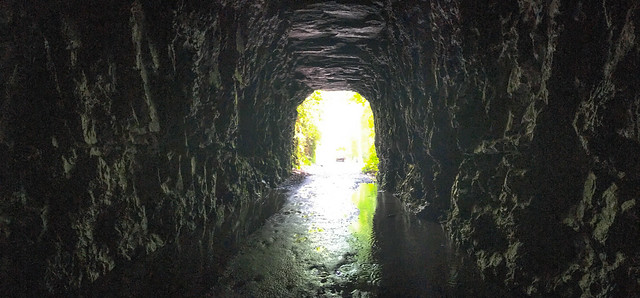
There was stiff competition between the railroads. I found a letter to the editor in an early edition of the Anderson Intelligencer (which I failed to cite and now can’t locate) which spoke of the “Greenville pipe dream” of a railroad across the mountains. Both the Swamp Rabbit and the Blue Ridge kept active schedules for passengers and freight over the portions of rail which were completed.
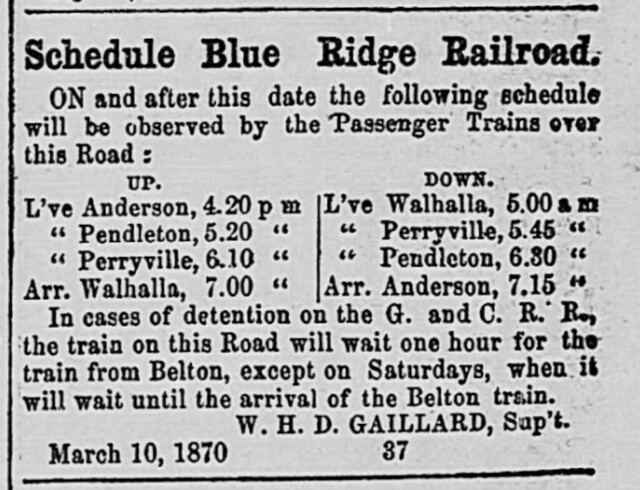
In her 1928 book Traditions and History of Anderson County, historian Louise Ayer Vandiver described the Blue Ridge Railroad route through the town.
In 1856 the cut running through the town just north of the square, and now bridged on the east side by the railroad station, was made for the Blue Ridge. There were strong advocates for having the road enter the town almost exactly as the Piedmont and Northern does now; but the majority thought that too far out, they wanted their road right through the town and they got it. The three railroad bridges across the cut made excellent places from which to see the wonderful cars, and for a long time they were lines with spectators when the train passed under. Even as recently as the early 80’s [1880’s] the boys of town were to be seen hanging over the balustrade when the cars came in or went out.
Where the cut was excavated used to be a street. As usual, the work was given to the man making the most advantageous bid for it. In this was Mr. Crawford Keys for the contract, and being a wealthy man with a number of slaves, he easily accomplished the job.
This undated view that I found in the book Anderson County: A Pictorial History by Hurley Badders shows an undated early view of the cut, apparently carved by slaves prior to the Civil War. Murray Avenue is absent in this shot.

An 1884 Sanborn Fire Insurance Map shows that the “three bridges” described by Vandiver were actually two foot bridges on either side of a carriage bridge that crossed the cut. Here’s a cropped version of the bridge with a larger view in context. Note the number of buildings lining the rails at this point. One other thing I found interesting was the location of several “public wells” on the map.
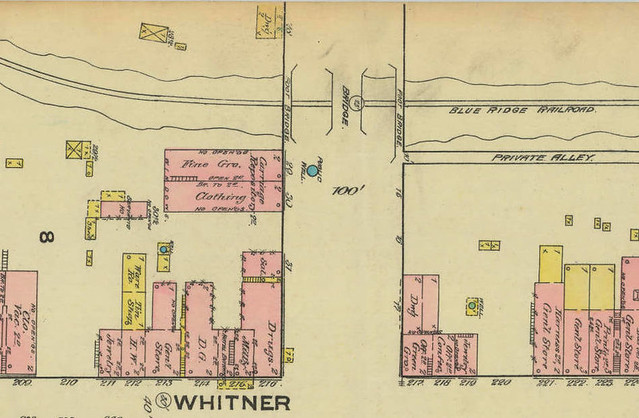
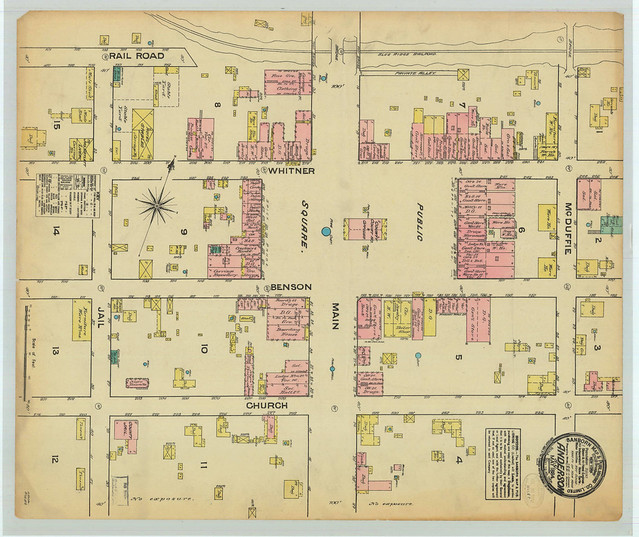
That’s the route of the railroad, but I wanted to know about where passengers boarded. For that I went to the 1901 Sanborn Map. In this image I could see a small passenger depot to the west of town.

A larger freight depot stood on the east side of town, just on the other side of the Main Street Bridge and beyond McDuffie Street.

According to Anderson Memories: The Early Years published by the Anderson Independent, the “Great Fire of 1914” destroyed this railroad depot and the cotton warehouse behind it. I’ve searched through news archives but I’ve only been able to find after-the-fact reporting attempting to assign a cause to the fire, but no reporting on the fire itself.
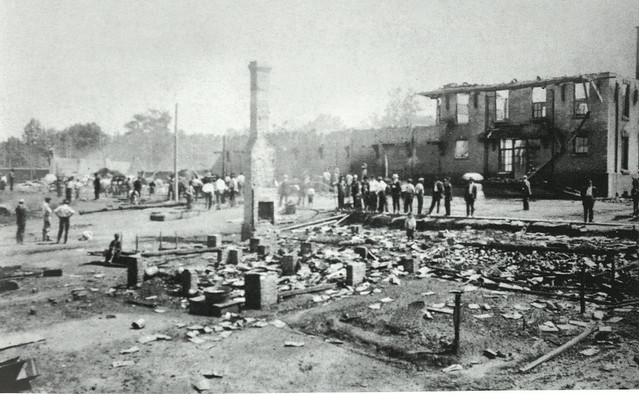
I searched for “Blue Ridge Railroad Depot Anderson” and was able to find an image on the Library of Congress website. A sign on the door identifies this as the “Railway Express Agency.”

It looked promising, but I didn’t remember seeing anything like this on our explorations. However, when I looked back at the boring gray building over the tracks I could see that the windows matched. All of the decorative architectural features were gone, but this was the same building.
According to the nomination form for the downtown Anderson Historic District for inclusion on the National Register of Historic Places, the upper floor decorations were removed in 1940.
I still wasn’t sure of the purpose of the building, though. Was it for passengers (as I suspected) or for freight? The Railway Express Agency was a precursor to services such as FedEx and UPS. You could send packages via rail to agency offices across the country. That still didn’t answer my question, though.
The 1918 edition of the Sanborn Fire Insurance Map does show this building across the railroad tracks. On this map the building as labeled as a “Passenger Station.” I took the map and overlaid it onto a Google Earth image to show it in present-day context.
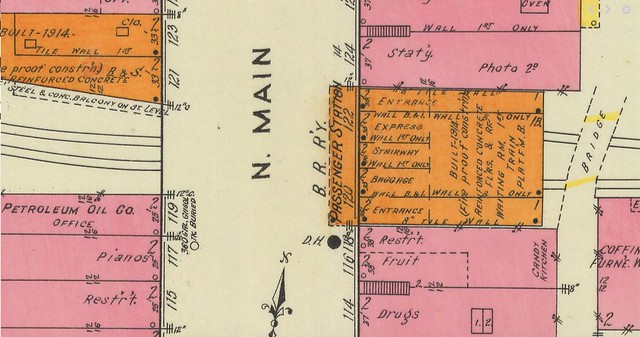
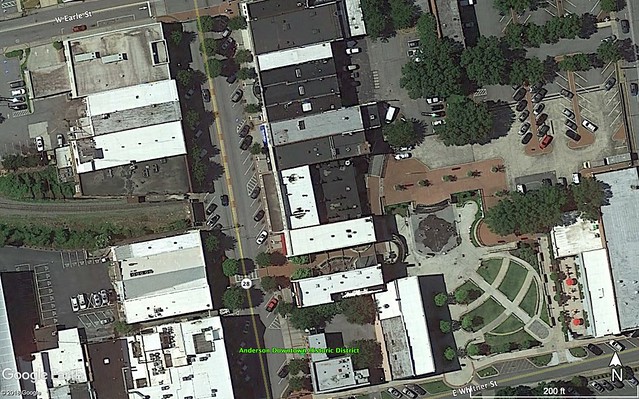
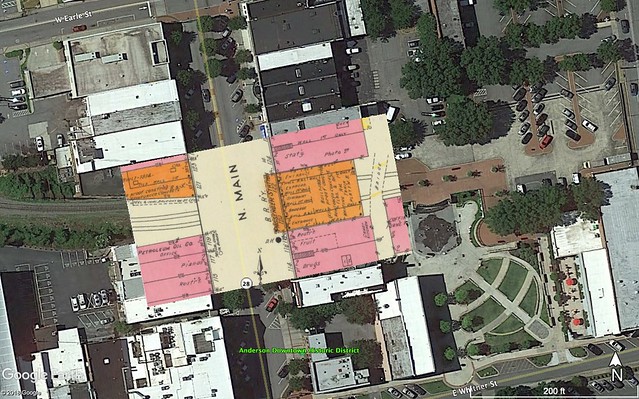
Now that I had a time frame I could search for news articles more efficiently. I found several articles in the Anderson Intelligencer from February and March of 1915 reporting on the opening of the new station.

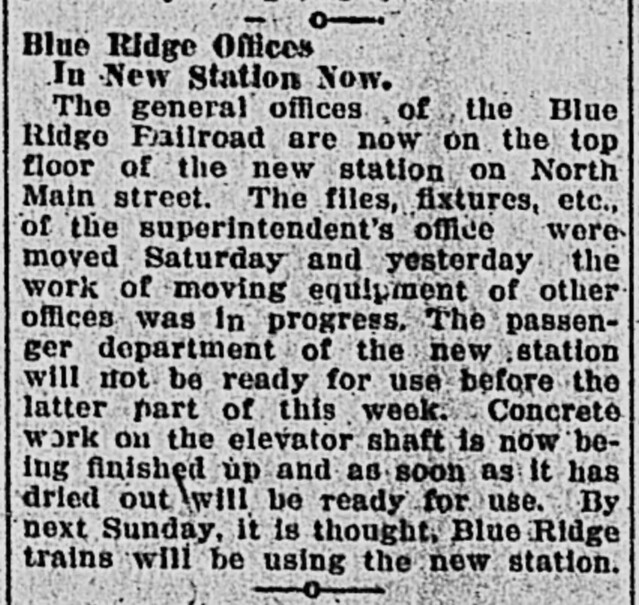
I had positively identified this building as a passenger station. What I really wanted was a photo of the station, particularly the lower platforms, when they were in use. I finally found one such photo on the South Carolina Encyclopedia website. There is a steam train in the station with two men in attendance. The folding door platform is in place with its concrete stairs. However, there doesn’t seem to be any passenger activity.

Both the books Anderson Memories: The Early Years and Anderson County: A Pictorial History have more expanded views of this scene. Make note of the “Gallant Belk Co.” sign on the left. There will be more on that in a bit.

That latter book identifies this as a 1942 photograph. According to Hurley Badders…
The depot was located on North Main Street, directly above the tracks. A stairway and elevator led to the track level. The upper floor of the depot housed the company offices. Fireman Pete Morrow and Sugarfoot, the brakeman, are beside the train.
Photo from the Vivian-Martindale collection, Pendleton District Historical and Recreational Commission
I took that image and used Photoshop to superimpose it with one of the photos we took on our exploration. Of course, now this view is obscured with the parking deck.
Which brings up the final question – when and why was the deck added? For those answers we go back to the sign in the upper left of the train photo.
According to an interview with long-time Gallant-Belk manager Neal Long, Erskine Gallant came to the area in 1919 and bought the old Lassiter General Merchandise Company. He opened a store in partnership with John Belk of Charlotte. Over the years Gallant expanded his store, purchasing more of the buildings fronting onto Whitner Street and backing onto the railroad. Gallant would create arched openings between the different sections of the stores, which often wouldn’t match or would be at a different level with the rest of the store.
The Main Street passenger depot ceased operations in 1945. Sometime thereafter Gallant-Belk unified its multiple store fronts with a single facade on Whitner Street.
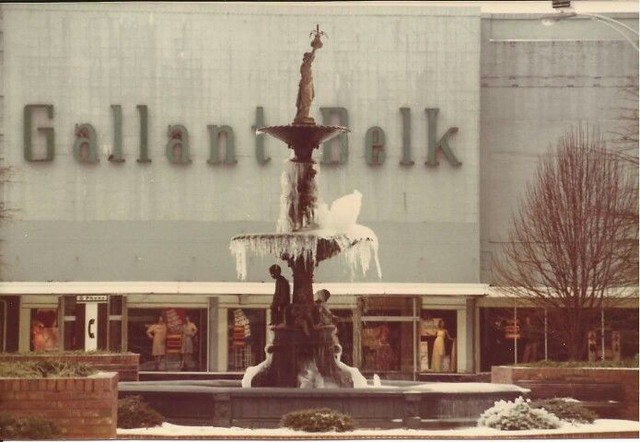
The store built a new parking deck over the railroad to accommodate customers. The loading platform and passenger access areas were obscured and forgotten.
Gallant-Belk itself didn’t stay in the area. In the 1980s it moved to the new Anderson Mall north of town. Eventually these buildings along the railroad were demolished. In 2014, one hundred years after Blue Ridge Railroad built its passenger depot on Main Street, the Carolina Wren Park opened. From what we could see, the park had no reference to the long history of the area, neither Gallant Belk nor the railroad.
However, there was a historical marker we missed. On one of the columns of the old depot, not visible from the street, there is a plaque commemorating the building’s former purpose.

If we had just walked across the street and found this marker, it would have answered pretty much all of our questions. Oh well.
There has been an Underground Atlanta and an Underground Columbia. Neither of these survived as viable commercial endeavors. There is even less space and resources to create an Underground Anderson district. I’m afraid that the old Blue Ridge Passenger Depot will remain an obscure artifact from an earlier era of transportation. Still, it’s somewhat reassuring to know it’s down there.
I’d love to be able to explore the nooks and crannies of the buildings on either side, including the old depot itself. At the very least, I wish I could find another photo showing the platform with passengers. Maybe one day.

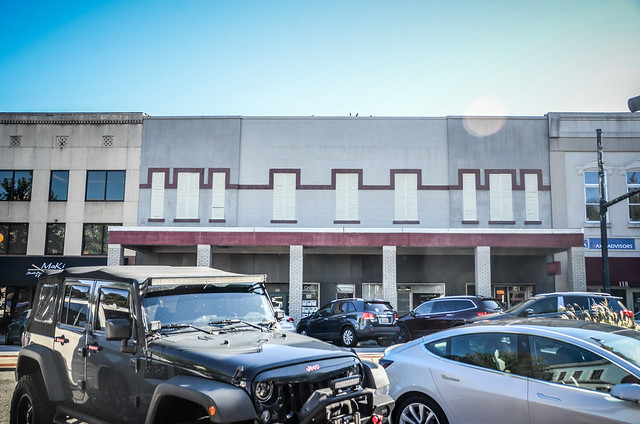
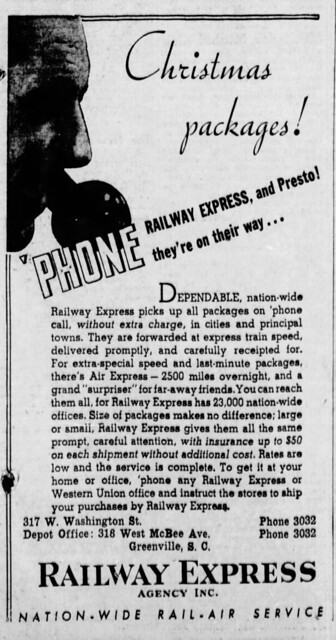
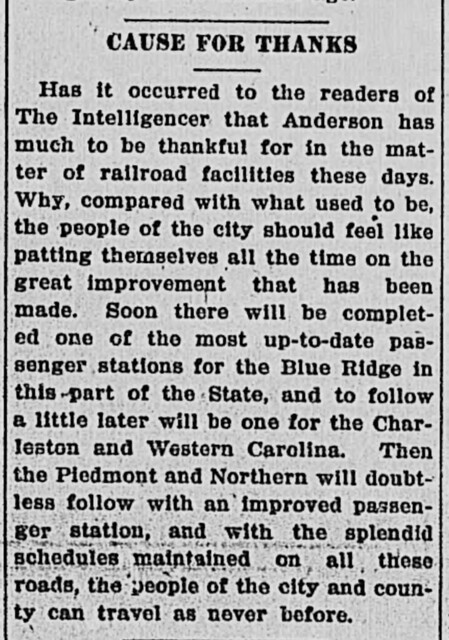

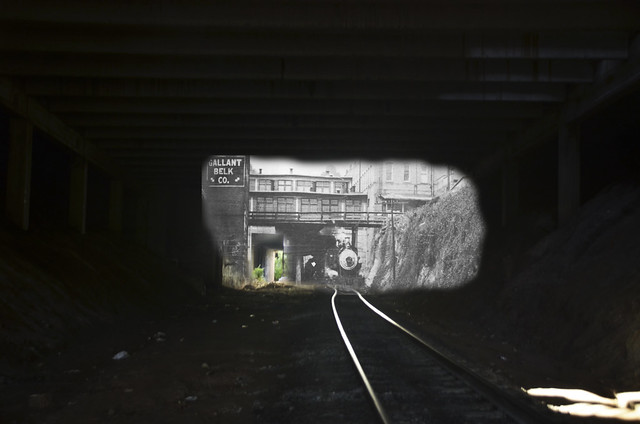
Your photography is spectacular!! Thank you so much for sharing!
Tom,
Once again, I stumbled across one of your posts that I found fascinating. Thanks so much for writing about this! I found out about the tunnel a couple of years ago, when my kid was attending Anderson University and he told me about exploring it with some friends. I finally went to check it out a couple of months ago, and had a lot of questions about the history of it. Thank you for all the research and photos.
as a teen there was a Barber Shop (N.Main close to track overhead.)called Rada’s that you went down steps to get to .One day I was walking tracks under the Main Street area and back then there were steps leading up to the platform, I came to a door and open and found myself in his barber shop. He looked at me and said that door should have been locked! SO, I guess in times past this was the way to get down to train station if the Train had came thru Anderson as once planned. I do remember there was still a large buggie you pushed on platform for load and unload luggage. Some said in those days that the County Council didn’t want a train coming thew Anderson to Atlanta.It ended going thru Seneca instead.
I am very interested in the railroad cut history in Anderson and preservation of information with regard to it. I assume you are the author of the presentation about Underground Anderson in Random Connections and would like to be able to get directly in touch with you. I would appreciate it if you could give me an email address and/or telephone number and possibly any other information about your background.
Thank you for the work you have done. I will look forward to hearing from you.